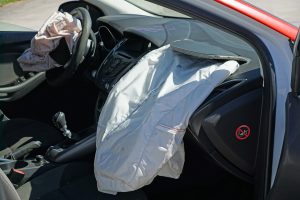View Monthly Specials!

Owning a car comes with a lot of responsibility. One of the most important responsibilities is getting car insurance. The big question is how much insurance do you need and what you should make sure is covered. There are some factors you should keep in mind when considering what coverage is essential and what you might not need. These are some of the types of auto coverage and why they are essential.
1. Liability Coverage for Bodily Injury
The most important coverage to carry is your state’s minimum liability insurance. This type of insurance covers other drivers on the road for damage and injury that you cause. Each state has laws for the amount of liability insurance you need to carry.
If you don’t carry the minimum and you get into an accident, you run the risk of losing your driver’s license and you can face large financial penalties. If you are found to be at fault for an accident, you will most likely be responsible for covering the cost of the damage that you caused. You should also carry enough liability coverage to protect your assets if you cause an accident.
2. Property Damage
Coverage for property damage is also important to carry and usually comes along with liability insurance. This insurance covers damage to other people’s property. It would cover a car that you hit or even damage to city property, such as a guardrail. The amount of property damage covered is the amount listed in your policy, so keep in mind that the state minimum might not be enough to protect you if you cause a serious accident.
3. Collision Coverage
Collision insurance covers the cost of repairing your own car after an accident. The amount that you carry depends on the value of your vehicle. When adding this insurance to your policy, you need to determine what you want your deductible to be. This is the amount you have to pay before insurance pays to get your vehicle repaired.
Collision coverage is necessary if you have a new car, but it is less critical as the value of your car declines. If you drive a vehicle that is only worth a few thousand dollars and have a large deductible, it might not make sense to carry it.
4. Comprehensive Coverage
Comprehensive insurance covers damage to your car that is not the result of a collision, such as a fire or damage when a thief breaks in. Comprehensive coverage also has a deductible, so consider what you can pay out of your own pocket.
5. Rental Insurance
Rental insurance will cover the cost of a rental car while yours is in the shop after an accident. This type of insurance usually only adds a few dollars to your premium, and will help with the expense of renting a car when you need it. When deciding how much coverage you need, consider the daily rental rate for a vehicle that is comparable to the one you have.
While certain types of auto insurance are required, there are other coverages you might be able to do without depending on your vehicle.
Image via Pixabay.com




